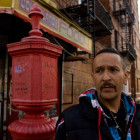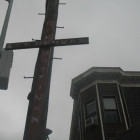Bronx
Life in the Towers: 'I'm Tired Of Ducking Bullets'
Hannah Rappleye |
Ebone Ryals, a resident at the Towers for many decades, helps Janey and Letitia plant. Photo by: Hannah Rappleye
A day at River Park Towers reveals a lot about what low-income New Yorkers face from government, management and each other. By: Hannah Rappleye
When it opened in 1974, River Park Towers in Morris Heights, the Bronx, was lauded as the first modern high-rise for the poor. Much has changed since then. City Limits spent a day with some of the residents.








